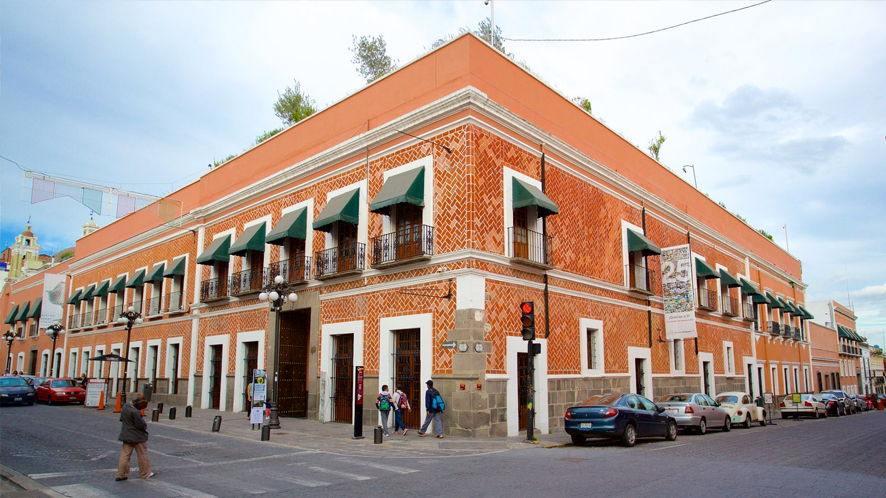The Amparo Museum building was part of a group of buildings that had different uses over time. Its history dates back to the 16th century when in 1538 the first hospital in the city of Puebla, called San Juan de Letrán, known as “El Hospitalito”, was founded.
Around 1642, Bishop Juan de Palafox y Mendoza requested that the sick be transferred to another hospital. The building and the adjoining properties that included the vegetable garden and an unbuilt plot of land changed their use, housing several schools, such as the School for Girls dedicated to the Purest Conception, and a shelter for married women or widows.
Likewise, its walls saw the passing of a priest’s house, a nursing home and private homes. From 1871, part of the building housed the house of Vicente Espinosa Bandini, grandfather of Manuel Espinosa Yglesias, founder of the Amparo Museum.
The vestibule opens with a portrait of Mrs. Amparo Rugarcía by Diego Rivera and a painting of her grandson, Pedro Diego Alvarado Rivera, alluding to the layout of Puebla by the angels and the crossbreeding; as well as a frieze of pre-Hispanic stamps and a glass Tzompantli, works by the architect Pedro Ramírez Vázquez, a museum adapter.
In the 20th century, the complex was adapted by Architect Pedro Ramírez Vázquez to house the Amparo Museum, inaugurated in February 1991.
Schedule: monday, wednesday to friday and sunday from 10:00 to 18:00 hrs, saturdays from 10:00 to 21:00 hrs.
Location: Calle 2 Sur No. 708, Centro, 72000 Puebla, Puebla.
Contact: Tel. 01 (222) 229 3850

